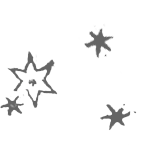Through the Eyes of the Lynx: Galileo, Natural History and the Americas
Herbs and Gardens
An explosion of 16th-century herbals dramatically revived investigation into the structure and causes of plants. With ongoing colonization and exploration came a vast increase in the number of known plants. With the Printing Revolution came the ability to reproduce plant illustrations by the hundreds. Yet the sheer quantity and unexpected diversity of new botanical information proved difficult to assimilate. Ancient categories of classification proved insufficient, as did the old doctrine of signatures, according to which essential natures might be discerned through direct observation. The search for new keys to the natural order occupied naturalists who created a new science of botany.
Browse Items on Display
| 1 |
The Interrogation of Plants Colonna, Fabio (1592) This book by Colonna, a member of the Lynx and a major contributor to the Hernandez natural history of Mexico, is the first book containing copperplate engravings of plants. |
|
| 2 |
The Advantages of Country Living de’ Crescenzi, Pietro (1471) This is the earliest published work on agriculture, a manual for managing a feudal estate. It is an ancestor to the early printed herbals, and explains what plants one must cultivate to be able to make the common remedies. |
|
| 3 |
Flowers, or, On the Cultivation of Flower Gardens, 1638 Ferrari, Giovanni Battista (1638) The Latin edition of this work mentioned the Lincean explorer, or microscope. This Italian translation of Ferrari’s work on flower gardens, published after Galileo’s trial in 1633, expunged any mention of the Academy of the Lynx. |
|
| 4 |
Flowers, or, On the Cultivation of Flower Gardens, 1664 Ferrari, Giovanni Battista (1664) This work, first published in the year of Galileo’s trial (1633), contains the first use of microscopic illustration in a botanical work. Ferrari described many exotic plants, including limes, lemons and pomegranates, and citron, which he prescribed as medicinal plants against scurvy. |
|
| 5 |
The Natural History of Plants, 1542 Fuchs, Leonhart (1542) Fuchs extracted the best knowledge available from Galen, Dioscorides and Pliny. Fuchs gave each plant a German name as well as the traditional Latin. He described nearly 100 northern European plants unknown to previous physicians. |
|
| 6 |
The Natural History of Plants, 1551 Fuchs, Leonhart (1551) Herbals were illustrated, colored, and issued both in large folios and small, economical, hand-sized, field-guide formats like this one. |
|
| 7 |
The Herball, 1597 Gerard, John (1597) Gerard, an estate manager for Queen Elizabeth’s chief executive, was in contact with naturalists around the world who sent him both plants and soil to grow them in. The first illustration of the “Virginia potato” appears in this volume. |





